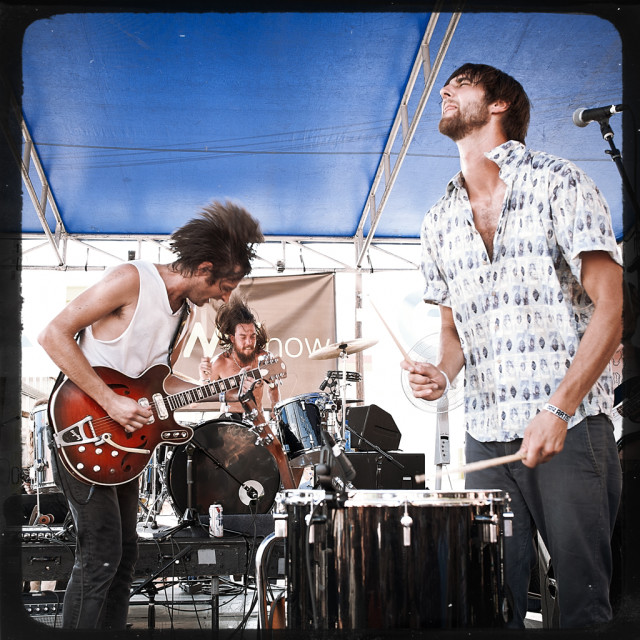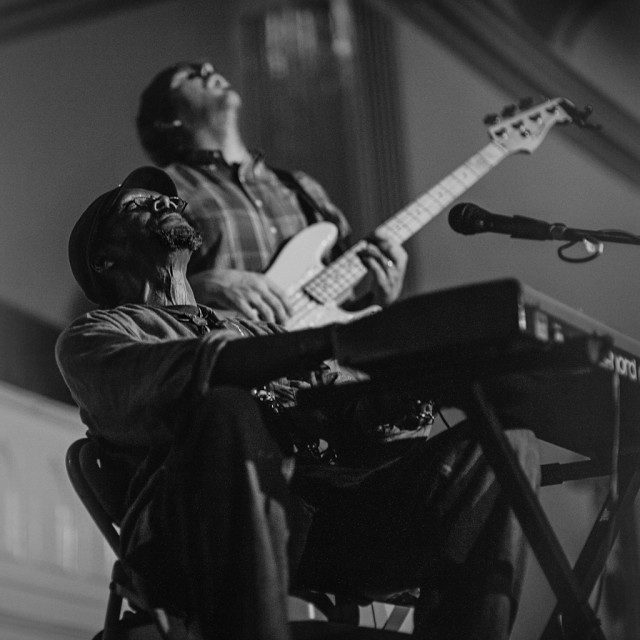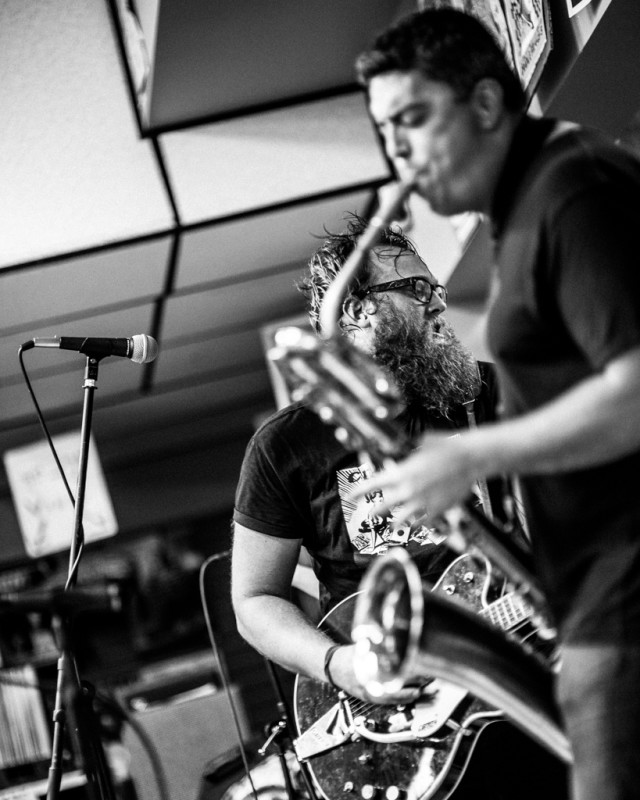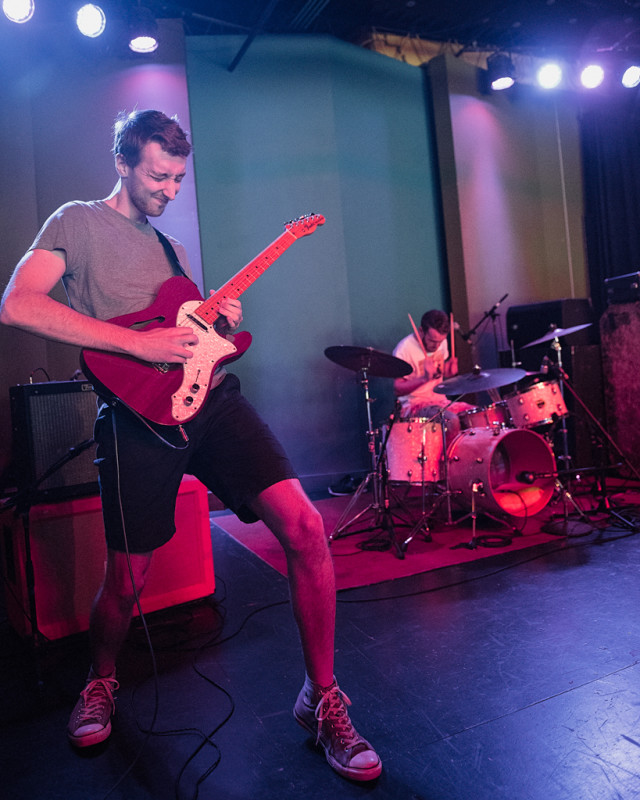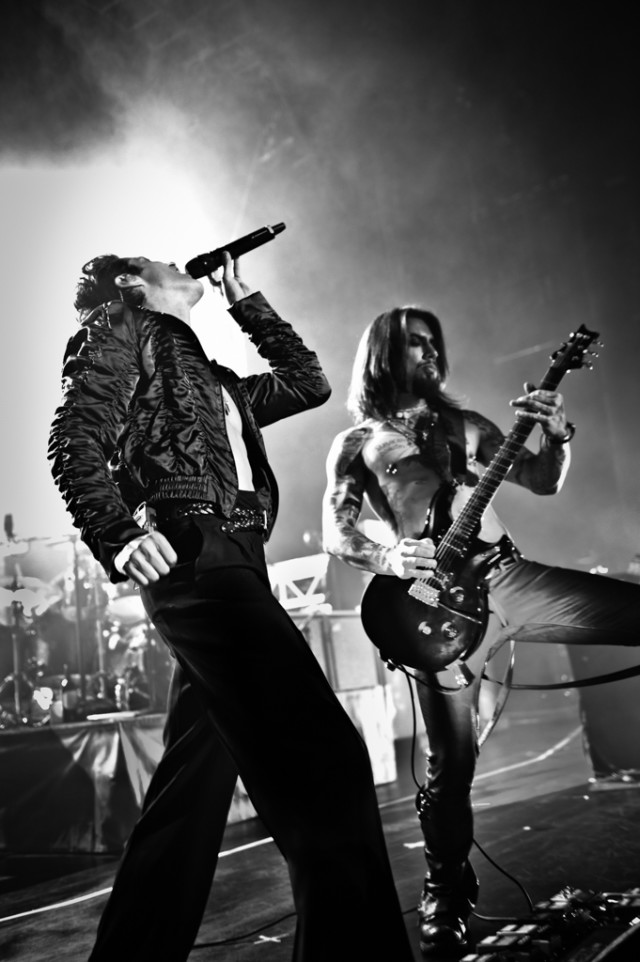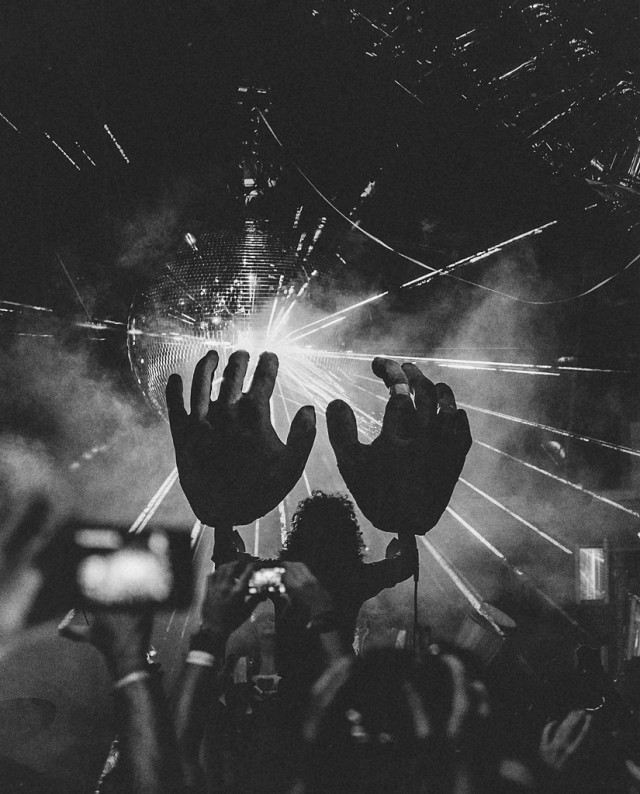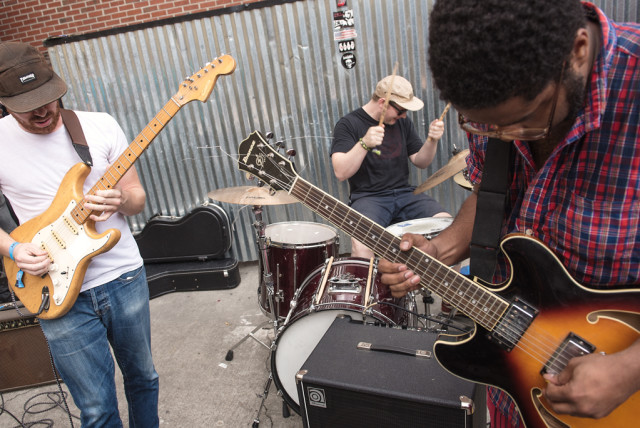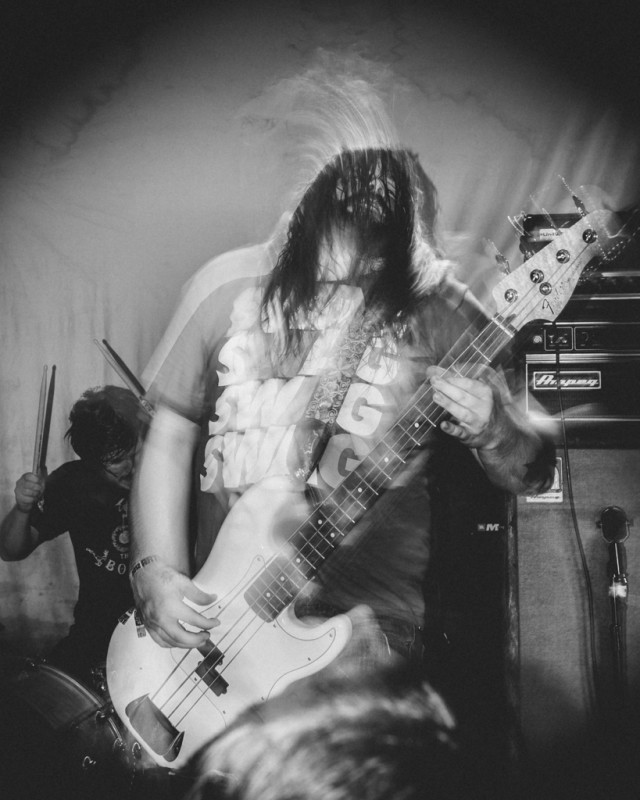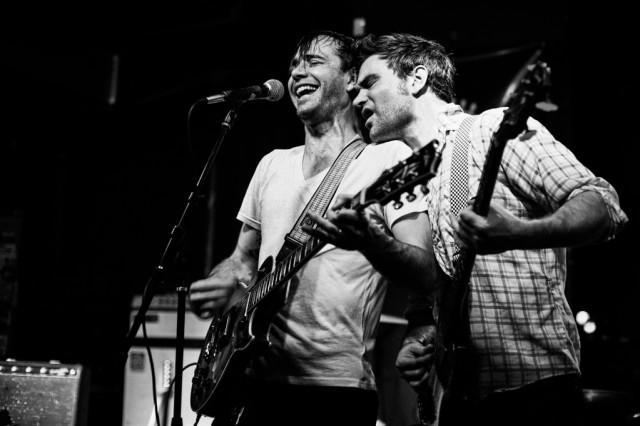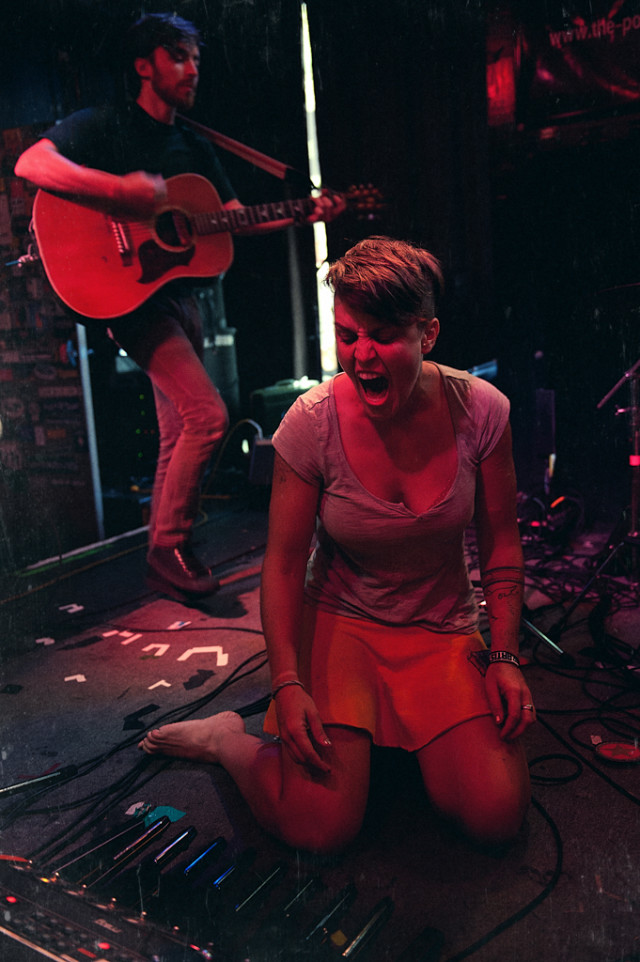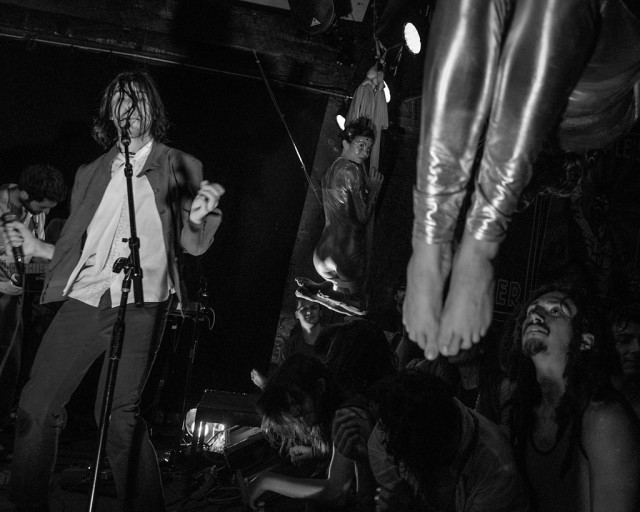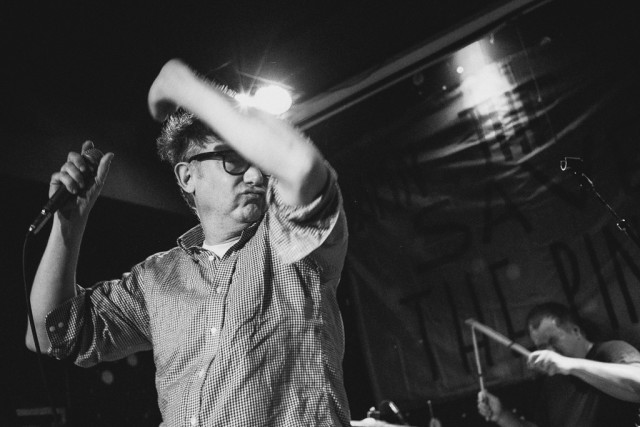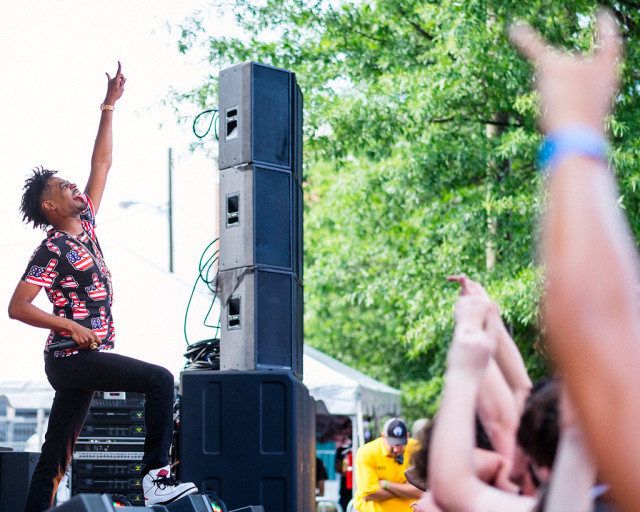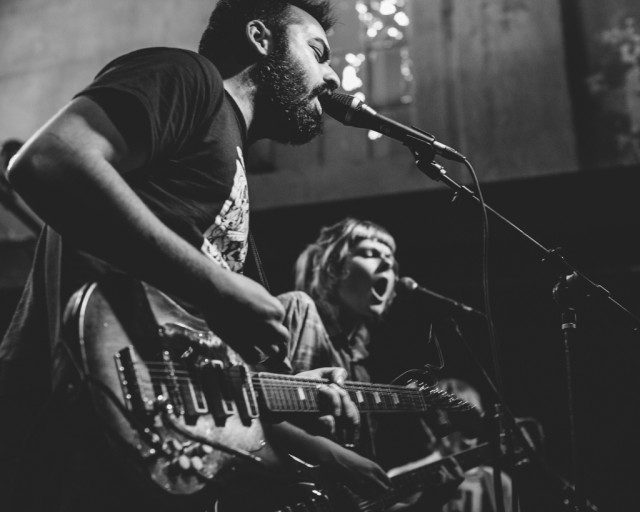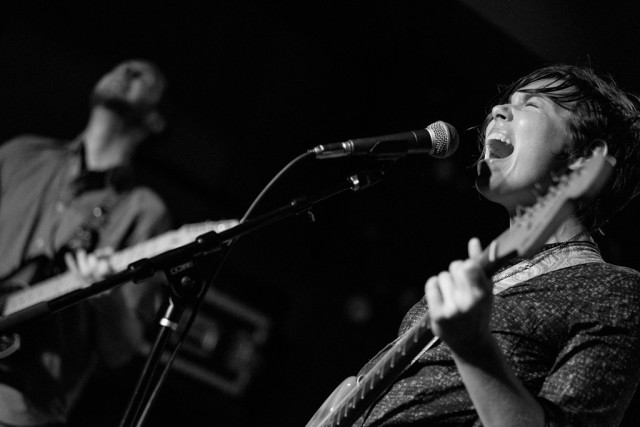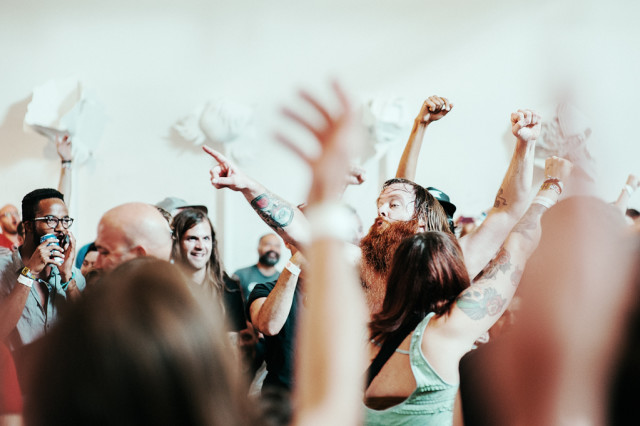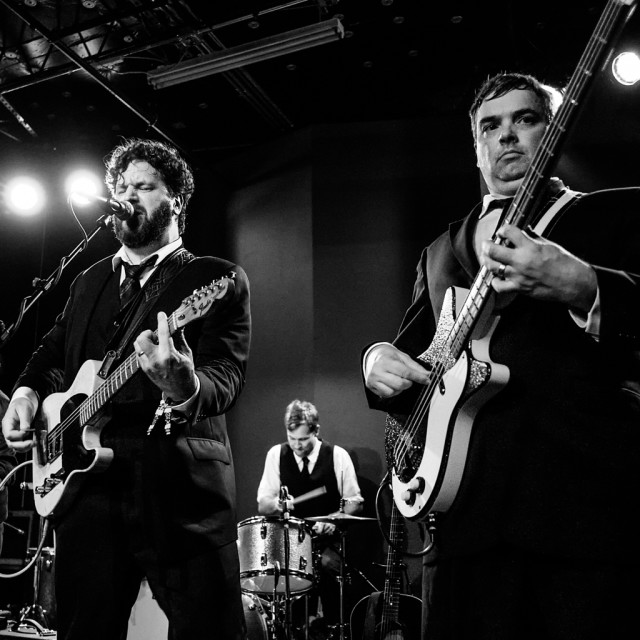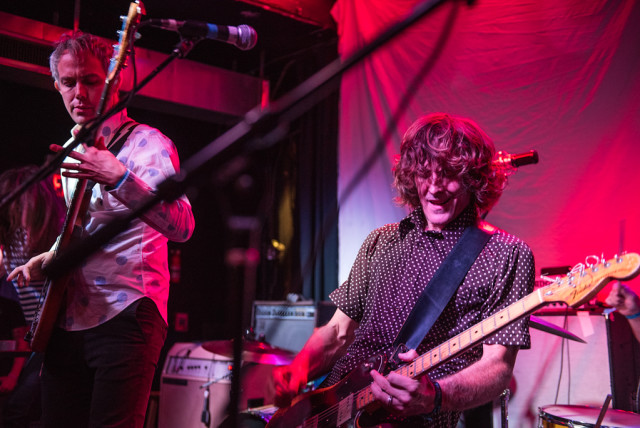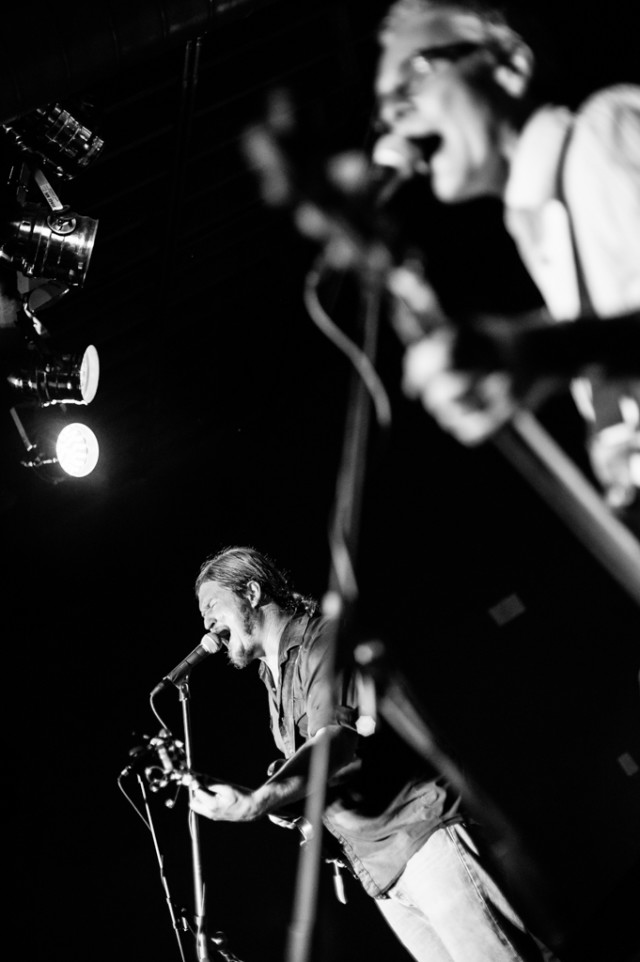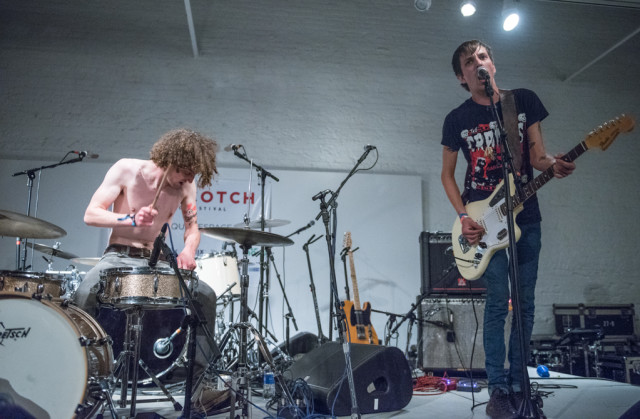When I started shooting live music, the first thing I figured out was that getting in tight to eliminate clutter was the easy, surefire thing to do when shooting a band to make sure that I got at least some good images. After awhile, though, my music portfolio started looking like a one-trick pony. How many photographs of the singer at the mike or the guitar player soloing did I really need? While there was nothing wrong with those sorts of shots, my portfolio badly needed variety and shots that could convey what it was like to be there down front at a show. That is when my hunt for the Holy Grail started.
What is the search for the Holy Grail about? For me, it is about getting multiple members of a band all in the moment. It might have the singer in an emotional moment with the drummer’s sticks in the air pounding the drums furiously while the guitar player throws her head back as she goes into a solo. It might include the audience as the band connects to it in a primal sort of way. It might feature interplay between two of the people on stage. One day, just maybe, it will be all of these things at once. That will be the true Holy Grail for me. But the journey is at least as important as the destination. Looking for those moments that break out from the simple shots and combine composition, content, emotion and luck into something special. Something that makes the person that stayed home that night say “Damn, I wish I’d made it out for that!”. Something that makes the person that did attend look at it and go “That’s it! That is why that set was so great!”.
For aspiring photographers (or one’s that just want to break the monotony and kick things up a notch), here are some tips and suggestions:
- Use a wider lens. This one seems obvious. The exact focal length depends where you are in relation to the band. In most of the photos shown above, I’ve used something in the 24-50mm range. A few used an 85mm when the musicians were further away. I like something wide enough to include 2-3 band members, but not so wide as to where I can’t see the faces and emotion clearly. If I’m shooting primes, a 28 or a 35 is ideal here.
- Learn to anticipate the moments and when they come, be ready for it and snap several photos. Get out of the habit of just taking a shot because you haven’t taken one in awhile at a show. Those are just wasted time and (hard-drive) space when you get home to your computer. But when something happens, pounce on it. It can be hard to keep track of what everyone is doing at any moment when looking through the viewfinder, so if it seems like the moment might be there, get several. You’ll especially want plenty if you have the drummer in the shot. Getting that perfect sticks-in-the-air moment isn’t easy.
- Pay attention to everything in the frame. Microphone shadows. Someone standing behind someone else to the point where they are obscured. A drummer in the shot whose face is hidden by a cymbal. It’s your job as a photographer to sort it all out and get a clean shot. It’s also perfectly okay to accept a photo that is less than perfect if the elements that work far outweigh the elements that do not. I’ve used plenty of shots where I hated the mike shadow but loved everything else about the shot. But understand the flaws and be conscious of them.
- Study other photographs and study composition – When I look at a lot of these images, I see in the compositions things like triangles and the golden spiral. Those aren’t things that I’m consciously thinking about when I take the images though. They are things that become intuitive the more I make photographs and the more I study other photographs and art. Look at the coverage from music festivals. Investigate the work of other photographers in the genre. Visit art galleries. Buy coffee table books in art and photography.
- Shoot more than just bands – there is a whole world out there waiting to be explored. One of the best things I ever did for my music photography was to start shooting street photography. Trying to organize the chaos of a stage into a meaningful composition is a lot like trying to organize the chaos out in the world. If anything, it is a lot, lot easier because musicians are usually doing something interesting, whereas people out in the world may not be.
- Be your worst critic. This is probably the best possible advice I can give anything when it comes to photography. Know the difference between great, good, mediocre and shit. Don’t accept mediocrity (and for goodness sakes, don’t accept or post shit). Always push yourself. Getting one great photo from a show is far, far better than getting 10 decent ones (and the same is true of posting photos online). Culling your photographs is a vital step.
